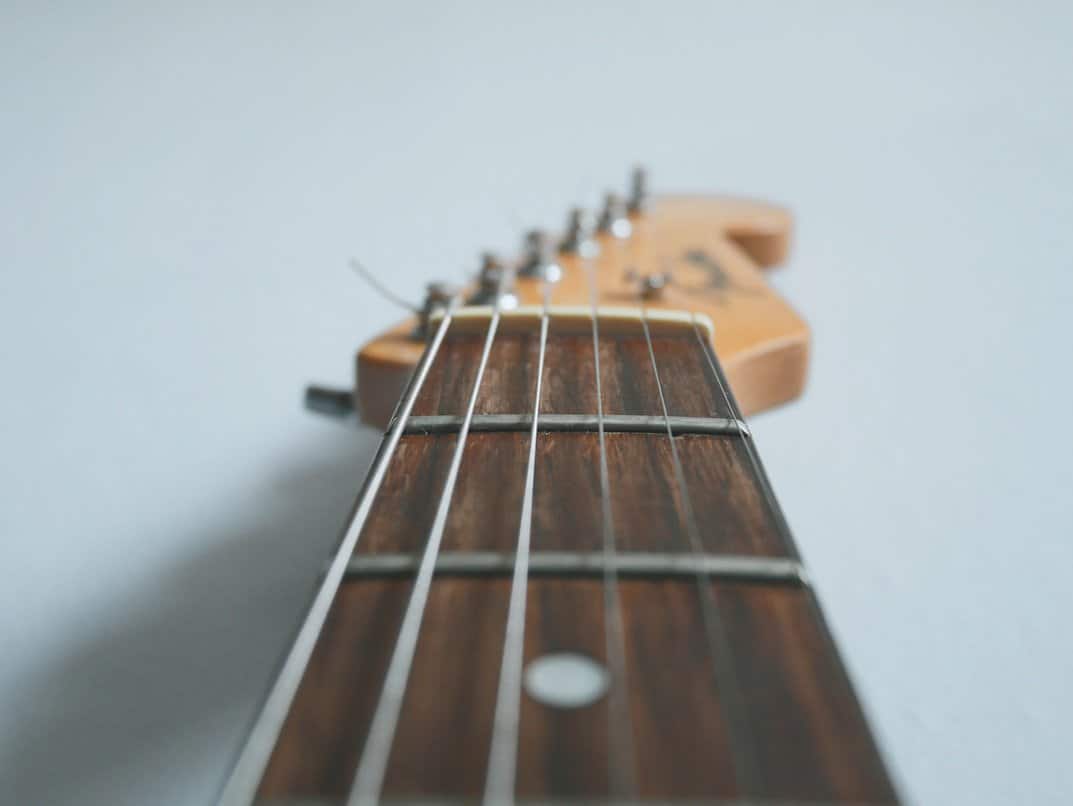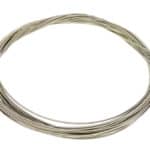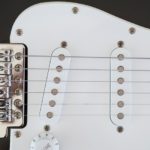Imagine you are looking to immerse yourself in the world of music and after some months of great effort, you buy your first guitar.
You are eager to start playing and becoming a wonderful musician but when you pay attention you notice that strings are not as good as you thought.
Factory stock guitar strings are usually bad in terms of quality. This occurs mainly in cheap guitars but high-ended guitars could likely find string sets superior in quality.
You may think that there are no huge differences from one set to another but let me tell you that the difference is noticeable.
I will try to guide you through this article to have a better understanding of this.
Let’s dive deeper into this topic!
What defines the quality of a guitar string?
The quality of a guitar string is determined by four main aspects: the gauge of the strings, the materials employed in its construction, the core of the string, and the coating.
String gauge refers to how thick strings are, the different thicknesses provide variations in tension, tone, and volume.
Regarding construction materials, we have six different types, some produce more bright sounds while others sound thicker.
Needless to say, this varies from acoustic to electric guitars.
Although not every string has a core, this feature represents how strings are constructed.
There are two types, round core and hex-core being the latter superior in quality.
Finally, we have the coating that is how strings are wrapped.
Currently, we can find two kinds of coating, NANOweb, and POLYweb.
Should you replace the strings of your new guitar?
To answer this question is important to bear in mind what are your expectations about playing guitar.
If your goal is to practice at home or play along with some friends, you can keep the strings or even wait until they wear out.
However, if you have to play live or gig, you should replace them with a brand-new set of strings.
In that way, you will have a better sound but remember to break them in before performing, so they don’t go out of tune constantly.
Why are factory guitar strings bad?
Factory guitar strings tend to be bad, that is because, in most cases, they have the lowest quality possible.
This is, of course, to save cost.
What is more, this influences not only the tone but also the feel in your hands.
As they are inferior in quality, strings tend to resonate past the nut a little.
The resonation produces unwanted noises and buzzings while playing.
If you use a wristband it could dampen the buzzing a bit but the best way to get rid of it is to get new strings.
I suggest you buy a set and install them.
Are all stock guitar strings low quality?
After reading the previous paragraphs you may think that every stock guitar has poor strings but this is not always the case.
High-end guitars come set up with premium strings so the quality would be undoubtedly better.
This happens because superior pieces deserve better quality components whereas lower quality instruments are just set up with poor strings.
There is no point in having a high-ended guitar with inferior components but, in some cases, could happen.
How to know if my guitar has factory strings?
This is a tough question to answer because there is no actual way of knowing it, as guitars come already set up you will never know what sort of strings they are.
However, if you realize or feel that they are not good enough you can replace them, use them for practice or even leave those strings as a backup set.
If you decide to keep the strings as auxiliary components you should know that you must follow some steps to do it properly.
As the strings are bad in quality, they could break while taking them off and it would be a headache if your intention is preserving them.
If you are not aware of these issues we have an article about that topic.
You will find it as “Can You Remove Guitar Strings and Then Put Them Back On?”.
What are the benefits of replacing factory guitar strings?
Changing factory strings has many benefits regarding tone, durability, and feel.
Better quality strings will retain the tone longer and would sound nicer, this is because they have a layer that covers and protects them.
In terms of durability, strings last longer because are made of high-quality materials.
Last but not least, replacing stock guitar strings will give you a finer feel.
This is wonderful because if you feel the strings are more comfortable at the touch, it will improve your playability.
What is more, you will find it easier to do bendings or play certain lines that could be almost impossible with uncomfortable strings.
What is the best kind or brand of string to replace stock ones?
There is no best or worst kind or brand for replacing stock strings but you can find some good alternatives in the market. In general terms, a brand-new set is not costly so you will be able to afford them.
If you are a beginner I recommend D’addario XL, although they are one of the cheapest options, are good in quality.
You can also go for an Ernie Ball set which is not expensive as well and will do an excellent job.
Many experienced players, also seem to love Elixir strings due to their durability.
What you have to bear in mind is that these strings are quite pricy, they are between $11 and $20 per set while D’addario and Earnie Ball cost less than $10.
Another remarkable aspect to know is the string gauge a guitar is intended to be.
Most likely beginner guitars are set up to use 009 light strings.
Should you replace the strings yourself?
Replacing strings on your own is something that as a guitar player you should know, so you can definitely do it by yourself.
Is important to know how to do it properly, otherwise, you may experience unwanted noises, vibrations and will have problems with tuning.
However, if you are not sure, what you can do is ask a guitar tech to do it.
As a technician is a professional there won’t be any problem and it will be a simple task for him to do, and maybe he can guide you through the process and teach you how to do it.
Here’s, however, a great tutorial by Fender, on how to change strings:

Hello there, my name is Ramiro and I’ve been playing guitar for almost 20 years. I’m obsessed with everything gear-related and I thought it might be worth sharing it. From guitars, pedals, amps, and synths to studio gear and production tips, I hope you find what I post here useful, and I’ll try my best to keep it entertaining also.





